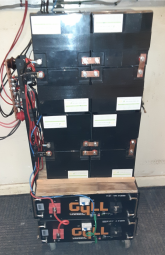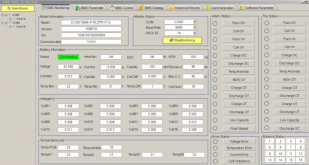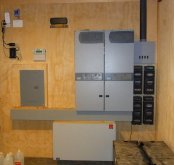euphonius
New Member
- Joined
- Nov 7, 2020
- Messages
- 68
New Year's greetings, Skysthelimit!Greetings Al: I'm surprised that none of the super smart people on this forum replied. I'm not one of them, but I am interested in your signature solar system as I'm just about to buy a bank of batteries from them and the 6k inverter. Can I ask how things are running so far and if you would change anything if you could go back and do it again? George
Very happy to hear from you and others who are dabbling in the Chinese offerings being imported by Signature Solar outside Dallas. I'm going from a small 3kw weekender offgrid system (Magnum 48v inverter, Midnite Classic 150 controller, 8 6v lead acid golfcart batteries with nominal 220Ah capacity) to a much larger system to power construction and operation of a fulltime home, a guest cottage, a shop and charging of a 75kWh electric vehicle. My 8-year-old LA battery was rapidly declining, not even getting me through the night as it once had, so I got one of the GYLL (or is that G4LL?) 48v 51.2kWh 100Ah batteries as a quick/dirty replacement. I figured the usable capacity of the LA bank was well under 100Ah, given the 50 percent state of charge floor and failing cells, and GYLL would give me at least 80Ah in usable capacity. My hunch was correct: the GYLL gets me through my daily cycle and hasn't dropped below 46 percent SOC as reported by the BMS. The Magnum inverter has worked OK, but gives wrong readings on state of charge; this is chiefly because the Magnum can't be programmed for a battery of less than 200Ah, so when the BMS reads 60 pct SOC the Magnum reports 80 pct...
Apart from that, I really like the GYLL and its BMS. The form factor is fantastic, and I look forward to stacking up to 6 GYLLs in the nicely designed cabinet that Signature offers, with big built-in buses for pos and neg leads. I've had to fuss a bit with the inverter and charge controller settings so that the inverter sends a bulk charge from my generator on sunless days. I set the Final Charge Stage for Silent (not Multistage), which revealed a rebulk option, which I've currently set at 52.8. I think that means the Magnum's built-in charger automatically bulks if the battery is reading 52.8v or lower. (Otherwise I have to manually switch to bulk with the generator running.) I may move that rebulk voltage a bit higher, unless someone suggests this is not wise.
Bigger picture, I'm excited about the off-grid and hybrid technology we're seeing out of China. Growatt, in particular, seems to be making very rapid innovations, especially compared to the incumbent brands we know in the US market (Magnum, Midnite, Outback, etc). Include SolArk in this category too; though they say it's a US inverter, I've been told by multiple sources it's made -- and largely designed -- in China. The shift to hybrid inverters (with integrated charge controllers) has pushed Growatt to the No. 3 or even No. 2 inverter maker worldwide, and they claim an installed base of more than 2 million units in less than two decades of development. They seem to be the market leader in Australia, where a lot of user expertise is bubbling up.
For my system, which will include (suntime) charging of a thirsty EV as well as all electric appliances including heat pumps for radiant floor heating and domestic hot water, I'm looking at a 22kW array and stacked inverters to achieve maybe 25kW. Signature has suggested the Growatt 48v transformerless SPF 5000 ES inverter, which can stacked up to 6 units and outputs (I think) only 240v (this wold require a 240-to-120v step-down transformer). A couple of concerns I have with the SPF 5000 ES:
- no obvious way to auto-start a generator;
- no obvious way to prioritize different charging loads (i.e., EV charging ONLY during sunlight and ONLY after the battery is charged);
- no way to get the Growatt to talk to the GYLL BMS (Growatt wants you to use their LiFePo4 battery).
Thanks!







